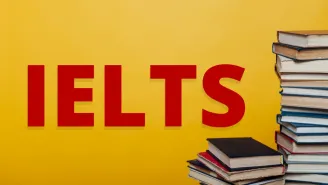Positive or Negative Development Essay: How to Answer
Introduction
- The opening of your essay should be about the topic and what will be in the essay's main body.
- Write whatever you feel about the topic, like your viewpoint and try to give examples that support your point of view.
Example: “The rise of smartphones has undoubtedly changed our lives in a world driven by technology. I believe this development has led to many positive changes that have changed communication and accessibility.”
Main Part (Body of the Essay)
Paragraph 1
- Your main thought should be expressed in your topic line at the beginning of this paragraph.
- Make sure you're as precise and thorough as you can be.
- It would be better if you were more specific about your point of view. Do not change your major idea; continue developing your previous idea.
Example: “First, mobile phones have made communication instantaneous and global. People worldwide can communicate easily through video calls and Instant Messaging, foster ties and bridge cultural gaps using only a couple of taps.”
Paragraph 2
- This sentence has a distinct subject line, like the last one.
- Before expanding into the following sentences, start your demonstration quickly.
- You're capable of using incredibly powerful words. The higher your score, the more specific and in-depth you can be.
- There may be some further development in the last sentence. Don't say anything new about the main idea.
Example: “But there is a downside to that convenience. The constant connectivity can lead to addiction and negatively impact mental health. Increased stress and disturbed sleep patterns have been linked to excessive screen time.”
Conclusion
- At the beginning of your conclusion, talk about your overall point of view on the topic and then give a general idea.
- At last, conclude your essay with the outcome of the topic.
Example: “At last, it is important to acknowledge the potential drawbacks, such as the impact on mental well-being, while the invention of smartphones has undoubtedly enhanced our lives through instant communication. To exploit the benefits of these technological developments, a balance must be struck between positive and negative aspects.”
Positive or Negative Development Essay: Sample Answer
Good and Bad Changes of Technology
Technology has improved our lives, but it also comes with its problems. Let's just take care of the two sides.
It's good that technology allows us to talk to our friends and family, even if they're far away. Apps and websites make it easy to stay in touch. In addition, doctors are using new technology to provide more effective treatments, and people have a longer life expectancy.
But there's also a problem here. Some people are using social media to bully, while others worry about their data. Also, machines do jobs, and some people don't have jobs, and money isn't fair to everyone. Because of phones and computers, we talk less face-to-face, making it harder for us to make friends.
Well, there are good and evil sides to technology. We need to be careful about the problems while still enjoying the good things it brings. We're supposed to ensure that we all benefit from technology, and that it doesn't worsen our lives.






